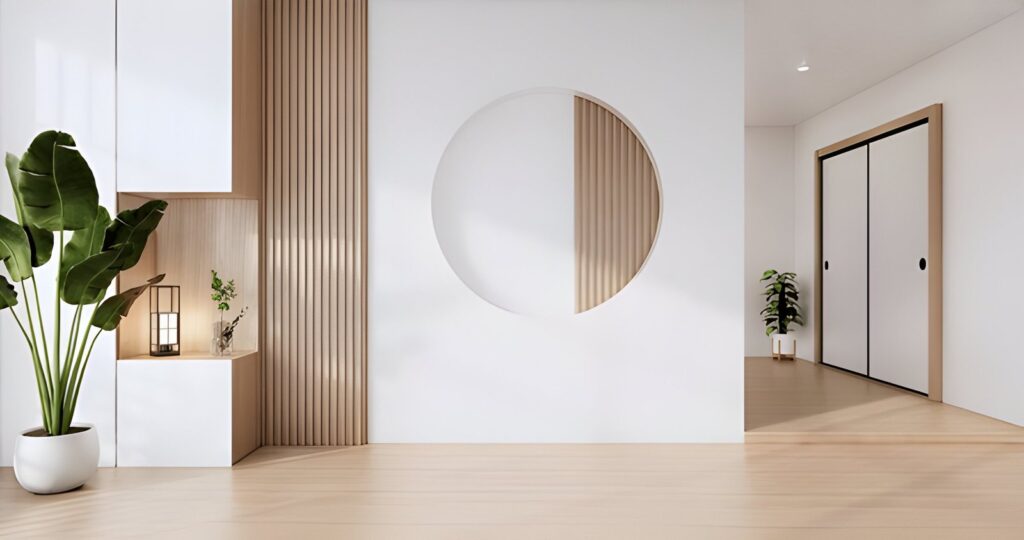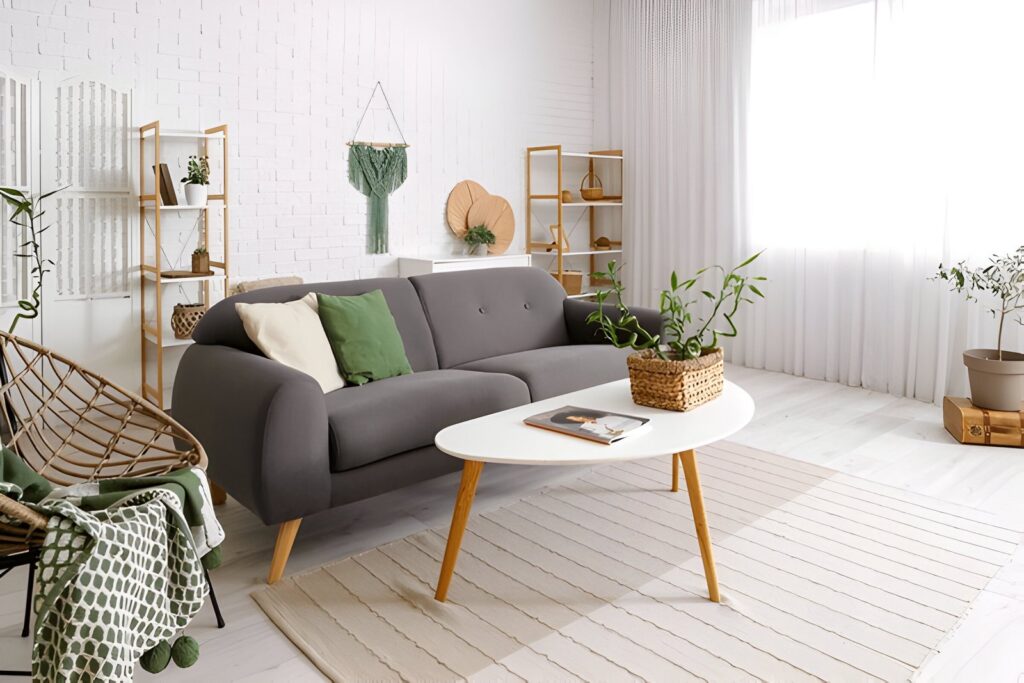In today’s fast-paced world, creating a calm and harmonious space can feel challenging. However, Japanese interior design philosophy offers a way to achieve this tranquility. By focusing on simplicity, balance, and connection with nature, you can transform your home into a peaceful retreat. Here’s how to go from cluttered spaces to serene interiors using Japanese design principles.
6 tips to elevate your interiors with Japanese Philosophy:
1. Embrace Minimalism: Less is More
At the core of Japanese philosophy is the idea of “Ma,” which translates to the concept of negative space or the “emptiness” between objects. Rather than overcrowding rooms with furniture and decor, embrace minimalism.
Opt for a few essential pieces that bring comfort and functionality. The goal is to create a sense of flow and openness in each room.

Tip: Start by decluttering. Remove any items that don’t serve a purpose or spark joy. Choose furniture that is simple in form, avoiding excessive ornamentation.
2. Balance and Harmony: Symmetry in Design
The Japanese philosophy of “Wa” emphasizes balance and harmony. This doesn’t mean strict symmetry, but rather a sense of equilibrium between different elements.
Incorporate natural materials like wood, stone, and bamboo, which resonate with the environment and create a connection with nature.

Tip: Mix different textures and materials in your home. For example, pair a smooth stone tabletop with soft wooden chairs or use tatami mats for a touch of authenticity.
3. Natural Light and Open Spaces: Let the Outdoors In
One of the defining aspects of Japanese interiors is the use of natural light. Large windows, sliding doors, and open spaces help bring the outdoors inside, creating a seamless transition between your home and the natural world. The design encourages a connection with nature, offering a sense of peace and rejuvenation.

Tip: Maximize natural light by using sheer curtains or no curtains at all. Incorporate plants to enhance the sense of nature indoors.
4. Wabi-Sabi: Finding Beauty in Imperfection
The philosophy of “Wabi-Sabi” celebrates the beauty found in imperfections. This can be applied to your interiors by selecting items with natural imperfections, such as handmade pottery or weathered wooden furniture.
It encourages embracing the aging process and recognizing the charm in items that tell a story.

Tip: Look for furniture or decor that has a sense of history or craftsmanship. Celebrate cracks, dents, and marks as signs of authenticity.
5. Feng Shui and Flow: Arrangement for Well-Being
Though feng shui is traditionally Chinese, its influence is seen in Japanese interiors, where the arrangement of furniture and objects is key to creating a harmonious flow.
Ensure that the layout of your rooms allows for easy movement and circulation, avoiding obstacles and overly crowded areas.

Tip: Arrange your furniture to promote relaxation and functionality. Avoid placing bulky items in the center of the room, and ensure there is space to move freely.
6. Tatami Mats and Shoji Screens: Authentic Touches
For an authentic touch, consider using traditional Japanese design elements such as tatami mats and shoji screens. These materials are not only functional but also contribute to the minimalist aesthetic. Shoji screens can create flexible spaces, dividing rooms without closing them off, while tatami mats offer a sense of warmth and natural grounding.

Tip: Incorporate tatami mats as flooring in certain areas or use shoji screens to create a flexible layout for privacy or open spaces.
Conclusion
Applying Japanese interior design principles can help you go from cluttered, chaotic spaces to serene, minimalist environments that promote well-being. By embracing minimalism, focusing on natural elements, and finding beauty in imperfection, you can transform your home into a peaceful haven inspired by Japanese philosophy.



